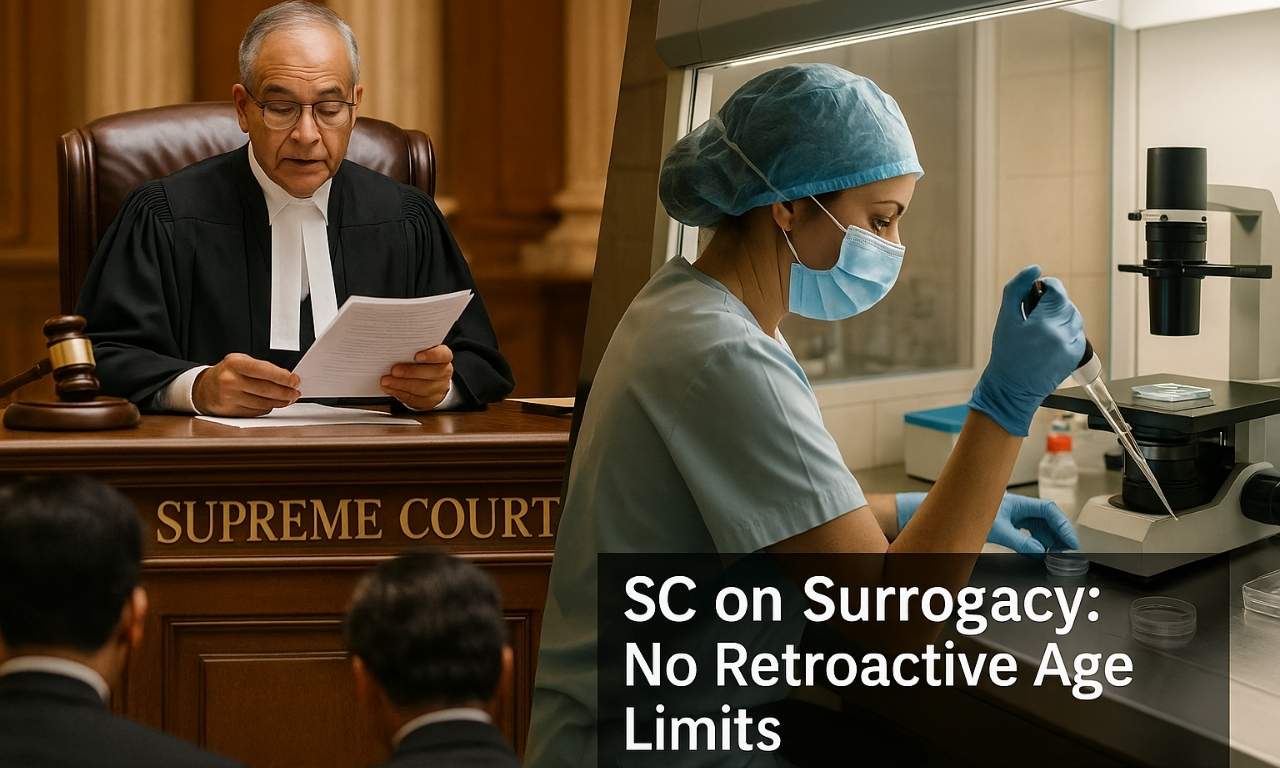The Supreme Court has reserved its verdict on petitions challenging the age limit for intending parents under the Surrogacy (Regulation) Act, 2021, which regulates surrogacy in India alongside the Assisted Reproductive Technology (Regulation) Act, 2021.
About Surrogacy (Regulation) Act, 2021
- Surrogacy: A woman carries and delivers a child for an intending couple, handing over the child after birth.
- Allowed only for altruistic purposes or in cases of proven infertility/disease.
- Commercial surrogacy is banned (including for sale, prostitution, or exploitation).
Abortion Rules
- Permitted only with surrogate mother’s consent and approval of authorities.
- Must comply with the Medical Termination of Pregnancy Act.

Eligibility Criteria For Intending Couples
- Must have married for at least 5 years.
- Wife: 23–50 years; Husband: 26–55 years.
- No existing living child (biological, adopted, or through surrogacy) — except if the child has disabilities or life-threatening conditions.
- Need an Essential Certificate from District Medical Board confirming infertility.
- Must provide 16 months’ insurance for the surrogate covering post-pregnancy complications.
- For Single Women: Age: 35–45 years.
For Surrogate Mother
- Must be a close relative of the couple.
- Married woman with at least one biological child.
- Age: 25–35 years.
- Can be a surrogate only once in her lifetime.
- Requires medical and psychological fitness certification.
Regulation & Penalties
- Establishment of National Surrogacy Board (NSB) & State Surrogacy Boards (SSB) to set standards and monitor clinics.
- Offences: Commercial surrogacy, sale of embryos, exploitation, child abandonment.
- Penalties: Up to 10 years imprisonment and ₹10 lakh fine.
Arguments in Favour of Age Limit
- Protects child welfare and ensures parents’ physical/mental capacity.
- Creates uniform regulations for clinics and surrogacy contracts.
- Reduces medical risks for older parents.
- Encourages responsible parenthood within a safe age bracket.
Arguments Against Age Limit
- Violates reproductive autonomy under Article 21.
- Ignores individual health variations and medical advances.
- Disadvantages late marriages and remarriages.
- Inconsistent — no age restriction for natural conception.
Way Forward
- Shift to case-by-case assessment based on medical fitness, psychological readiness, and social support.
- Balance child welfare with reproductive rights.
- Align laws with constitutional guarantees and changing social realities.
Conclusion:
While the Surrogacy (Regulation) Act, 2021 safeguards child welfare and medical safety, a more flexible, rights-based approach is needed to uphold reproductive autonomy and reflect evolving social and medical realities.





